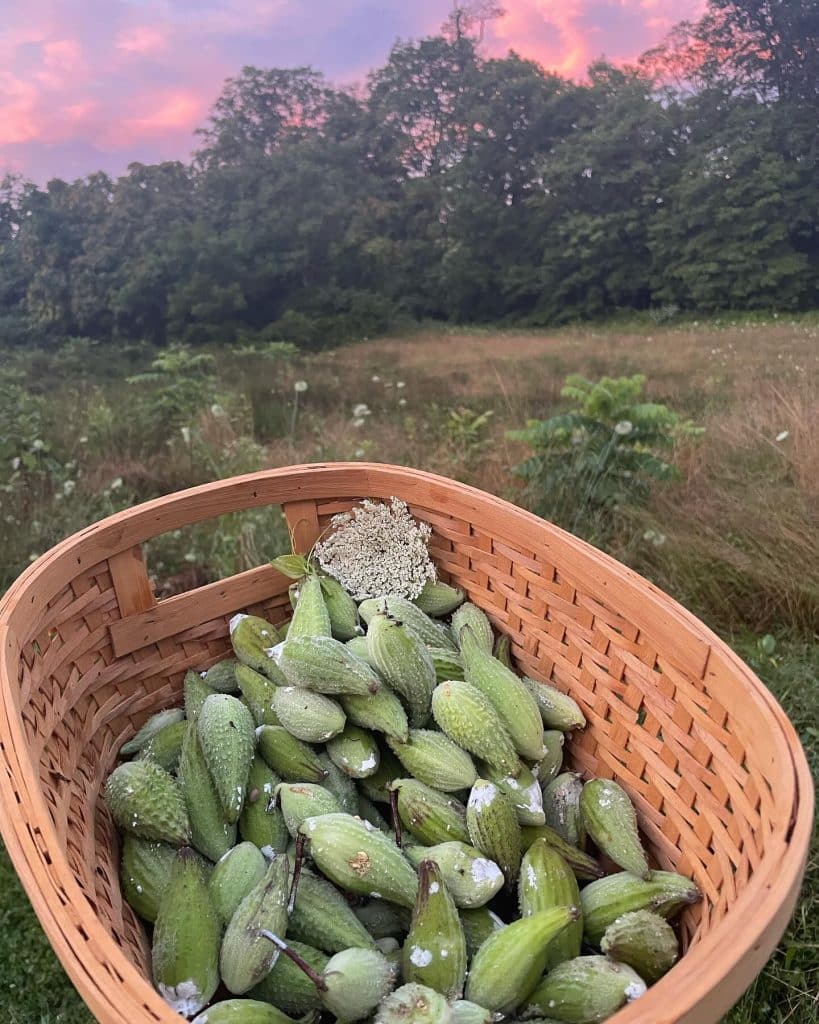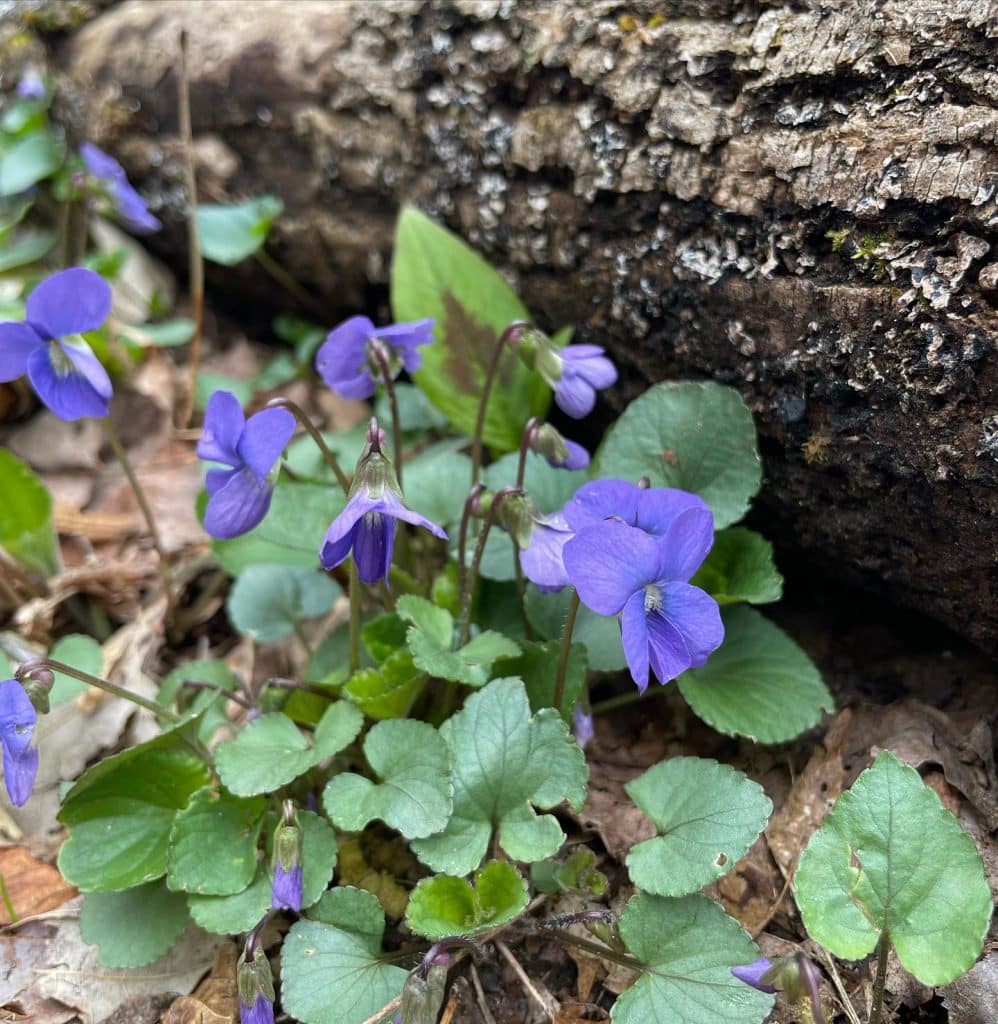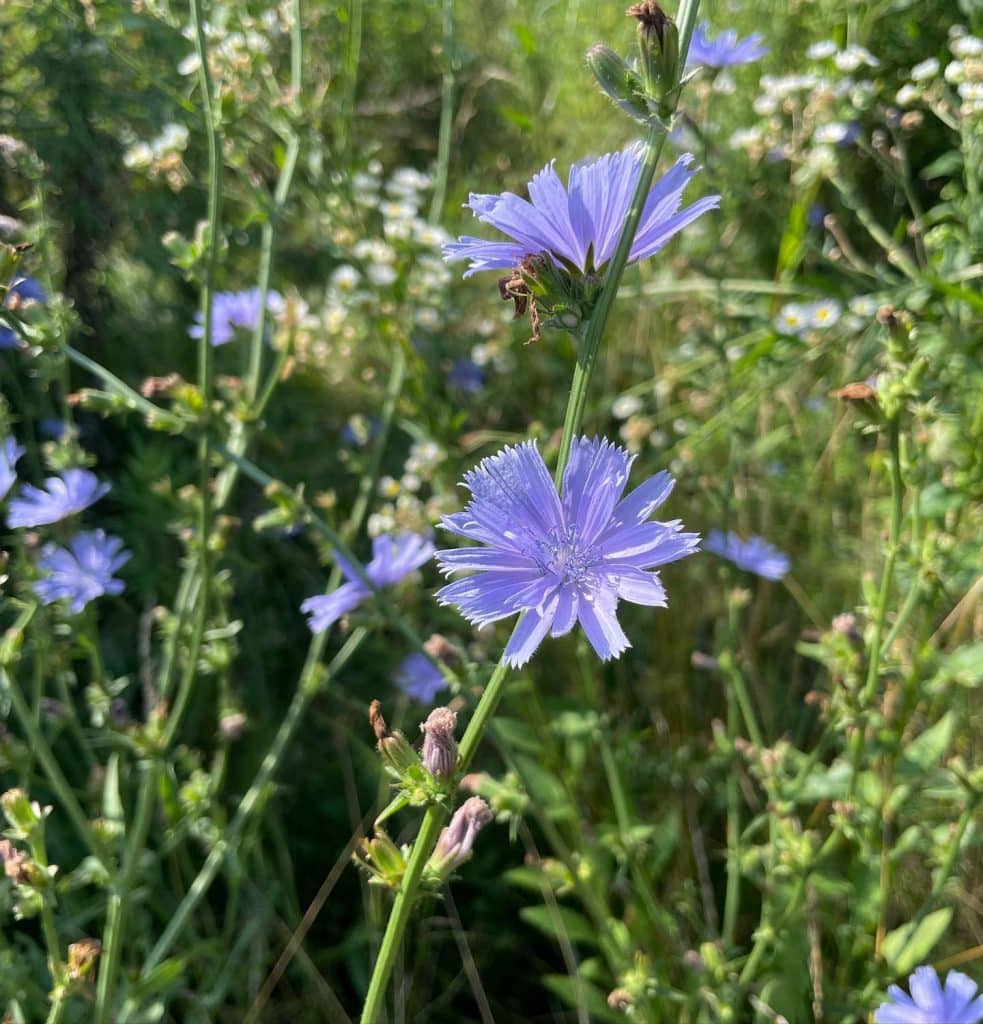Malva neglecta – Common Mallow

Common Mallow (Malva neglecta) is a non-native plant that is edible from root to tip. It can be found in disturbed areas that receive sun. Mallow leaves are ruffled and hairy. Flowers are lavender-colored and have five petals. The fruits look like miniature, flattened wheels of cheese. Mallow leaves, fruits, flowers, and taproots are edible. […]
Galinsoga quadriradiata – Common Quickweed

Common quickweed (Galinsoga quadriradiata) is an edible annual that is native to Central America. The plant is named for its quick growth habit. A single plant can produce 7,000 seeds and the plant can go through several generations per year. Due to the invasive growth habit of this non-native plant, it should not be cultivated […]
Asclepias syriaca – Common Milkweed

Common Milkweed (Asclepias syriaca) is a native perennial with multiple edible parts. Common milkweed can be found in meadows and fields which receive full sun. Leaves are opposite and oval-shaped with smooth edges. The stem is round and slightly fuzzy. It produces sap when broken. The pink flowers have five petals arranged in a […]
Pluteus cervinus – Deer Mushrooms

Deer mushrooms (Pluteus cervinus) are common edible mushrooms that can be found around the world. There are 40+ species of Pluteus in North America. All species in this genus are wood rotters with free gills and pinkish spore prints. Some Pluteus mushrooms are edible, some are psychoactive, and some are too small to forage. Deer […]
Viola sororia – Common Violets

Common Violets (Viola sororia) are a native perennial that produce one of the first spring flowers. Common violets prefer moist soil with partial shade. They are often found under deciduous trees. Common violets have heart-shaped leaves with small, pointed teeth at the leaf margins. Flowers have five petals that are usually purple with some […]
Hamamelis virginiana – Common Witch Hazel

Common witch hazel (Hamamelis virginiana) is an abundant native plant in New England with many topical uses. Witch hazel was first mass produced in the mid 1800’s in Essex, Connecticut. The leaves have an asymmetrical base and serrated edges. The plant uniquely blooms in autumn. Astringents made from witch hazel have been used to treat […]
Cichorium intybus – Common Chicory

Common chicory (Cichorium intybus) is a non-native edible and medicinal plant that can be found in sunny areas. The entire plant is edible, although it can be bitter. It is beneficial to eat bitter herbs, as they assist with digestion, weight management, and blood sugar regulation. Chicory has also been used to boost immunity and […]
